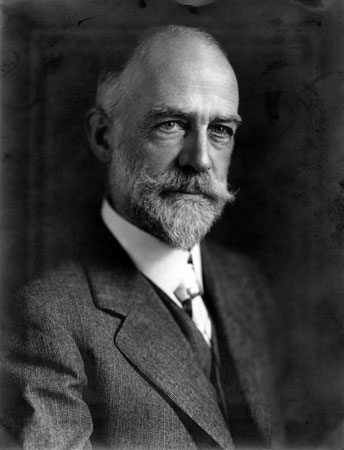|
|
||||||||||
 |
|
|
|
|||||||
|
|
||||||||||
|
|
|
|
|
|
|
|
|
|||
|
|
|
|
|
|
|
|
|
|
|
|
Gallery | People | William F. Durand

William F. Durand
Few men have lived to give sixty-five years of their lives to active, creative, scientific work - or to serve their countries during three wars. William F. Durand did both, but still found ample time for such diversified activities as heading up Stanford's Commission of Engineers to reconstruct the University after the 1906 earthquake and the upbuilding of the Stanford Home for Convalescent Children.
After the 1906 quake, the Commission of Engineers began the process of repairing selected buildings ten weeks after the earthquake. The consultants’ report was quite blunt in its assessment of Stanford structures. The “mechanical workmanship” evident in the Inner Quad buildings, they wrote, was superior to that found in more recent construction, where structural integrity had been compromised by poor design. Consequently, repairs of the Outer Quad, far more involved than those for the Inner Quad, would require more time and a good deal more money. Only plaster and stonework repair were needed in the Inner Quad. Cost estimates for some of those buildings were no more than $100.
Under direction from the Board of Trustees, the commission focused their efforts on the two dormitories, Roble and Encina, and Outer Quad buildings, including the Assembly Hall, Thomas Welton Stanford Library, and Physics corner. Contracts were signed and construction began in early July, barely two months before students were to return. A labor strike in late July threatened further delays, but sufficient repairs were completed to allow the university to reopen for the fall semester.Professor Durand was a pioneer mechanical engineer and served as the first civilian chair of the National Advisory Committee for Aeronautics, the forerunner of NASA.